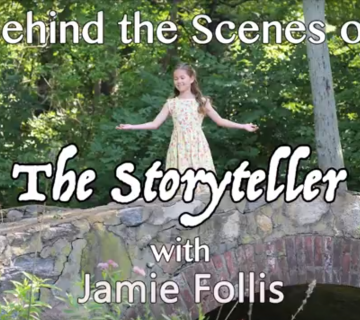You have no doubt heard the term, and may even have unknowingly performed one, in preparation for your last DIY shoot. Let’s take a closer look at the tech scout and what it can do for your production.
By definition a tech scout is an on-location walk-through with your production’s department heads – think director, cinematographer, UPM, 1st AD, production designer, etc. – ahead of shooting at that particular location. This walk-through will give each department a chance to familiarize themselves with the location and the challenges it may bring. In other words, it’s a final preparation of the technical logistics associated with each major shooting location.
So, with terms like “department heads” and “technical logistics” being thrown around you’re probably thinking that a tech scout is something reserved for big budget movies, right? Wrong. They most certainly do it, but if you’re helming a low-budget indie production, you probably have even more incentives to do a tech scout before your shoot. Ask yourself this: Can I afford to rent my location for an extra day, if I encounter unforeseen circumstances? Will my lighting package be able to compensate for any changing conditions? Do I have the necessary means to do extensive ADR on noisy takes? No, you say? Then you better plan ahead.
Typically you will do your tech scout during prep week, about one week prior to the actual shoot, when all department heads are able to get together and finalize their preparations. However, if you have access to your locations even further ahead of time, there are benefits to visiting them.
During pre-production Joe did some initial location scouting and we rewrote scenes once we understood the layout and limitations of the locations available to us, so the script reflected accurately the locations we will be using. – Rachel Noll, writer/producer of The Storyteller
Once you have the script locked in, locations secured and shot lists made, you do the full tech scout of all major locations.
Producer, DP, Director, 1st AD, Production Designer, UPM, gaffer, key grip – they were all there. We wanted to make sure all the heads were clear on the limitations and possibilities of any given location, so we could all plan accordingly. Any limitations on power outlets or lighting sources, etc. we wanted to be able to make a note of, and also have an eye on the production design, possible areas for actor holding, for makeup and hair, and other details, so we were prepared come the day of the shoot. I think all the departments can benefit from a scout prior to the shoot, just to know what they are up against and to be able to plan contingencies or brainstorm creatively if things aren’t ideal or there are any surprises. – Rachel Noll, writer/producer of The Storyteller
Let’s break it down.
Producer – will be working with each of the department heads to accommodate any changes in budgeting due to the limitations or possibilities uncovered during the scout.
DP – will be making sure the planned camera movements will be possible. Are there narrow corners to turn? Will there be shots in harsh light? Your DP might change certain shots to accommodate the locations and retain the overall visual aesthetic.
Director – will be balancing the vision of the film with the circumstances and making any necessary changes in shots to stay as true to the original intentions as possible.
1st AD – is largely in charge of scheduling, background actors, callsheets and script breakdown, so any changes to either of these based on the limitations of the location will be noted and arranged accordingly. Is there a proper holding area for the background cast? Will shooting have to wrap an hour earlier than anticipated due to traffic conditions in the area – and what does that mean for the callsheet?
Production Designer – takes note of anything that needs to be dressed for the shots planned and anything on location that will add to or subtract from the environment she is trying to create. Also pay attention to details like whether the centerpiece executive boardroom conference table that’s been rented for a certain scene is able to fit through the doorframe and whether the colors of the the costumes are going to clash with the wall color.
UPM – the Unit Production Manager oversees all the off-set logistics, as well as day-to-day budgets and production personnel, so if a certain location calls for more lighting than initially planned for, the UPM needs to make sure this can be made available, is budgeted and operable with the hired crew – or make the necessary changes.
Gaffer – is the chief electrician on set and will need to make sure there are adequate power sources for the lights that will be brought in. Will a generator be needed? Are the outlets on separate circuits? What’s the maximum load for each outlet?
Key Grip – will in large part be responsible for making the director and DPs wishes come true, so if there is limited space on set or a shot calls for more equipment than can safely be utilized in a certain location, adjustments must be made in advance.
All of these obviously work together, which is why the tech scout is best done with all department heads at once and not separately. Filmmaking is a collaborative process and the tech scout is the perfect opportunity for everyone to contribute in order to make your film the best it can be.
Not only is it an important part of the final stages of pre-production, the tech scout is also a hell of a lot of fun – it’s great to get a chance to know your crew and to be impressed by what they do. And doing the tech scout also means that we are just days away from shooting – at last. – Joe Crump, writer/director of The Storyteller
In some cases you will need to do your tech scout months in advance, so every single aspect of your shots can be meticulously planned and rehearsed, like for the 2015 Academy Award winner Birdman. Because of the extremely difficult long shots used throughout the film, the crew prepared by drawing up a minimalist (but to scale) version of their theatre location in a warehouse and used that space to rehearse camera movement, cast movement and lighting for weeks before the actual shoot. Imagine pulling this off without diligent planning:
Follow the entire process of making a film – up close and personal – through the trials and triumphs of The Storyteller, as told in our on-going article series.









Great breakdown Mads. I would also check out this free location tech scout checklist: https://www.studiobinder.com/blog/downloads/location-scouting-checklist/